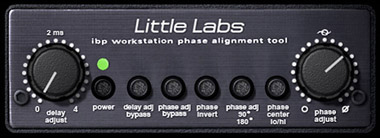
Ideally, the tracks you deliver to the mastering house should have peaks of around –3 dB for the loudest material (for example, a snare hit), while the rest of the track should average in the –6 dB to –8 dB area. That would give your peaks somewhere around 3 dB to 5 dB of dynamic range.
The problem with compressing dynamic range (or, equally hazardous, normalizing a track’s relative volume), is that you effectively rob your mastering engineer of the resources to do their job.
A good mastering engineer applies meticulous use of multiband compression – bringing up the punch and presence of the bass, adding clarity and sparkle to the high end – all by using different compression algorithms for different spectral bands.
Many inexperienced mixers will apply a “mastering compressor” plug-in, using a preset that creates a loud but muddy low-end, a bright and aggressive high-end, and little room for the mastering engineer to add — or de-emphasize — anything.
“Sometimes clients desire a ‘loud’ mix, but they have done little or nothing to control the dynamics of their mixes,” says Doell. “I like the analogy of getting a super sexy paint job for your car — asking the mastering engineer to do the entire job with one ‘coat of paint’ is not the smartest move. Layering the limiting (by compressing the vocal, bass, snare, for example) will allow a MUCH more gorgeous detailed, deep shine on the final product!”
On a related note, try to avoid over-compressing individual tracks for the same reason. Often a mastering engineer will get a track that’s well within dynamic range, but with a vocal track that’s been normalized to the verge of distortion. Again, it leaves little room for mastering to bring out any subtlety or nuance in that vocal.
4. Lack of Panning
It’s important to give your mix some dimensionality by balancing different elements within a nice, wide, stereo field. All too often, people tend to pan everything at or near the center, creating a cluttered-sounding mix that lacks definition. While certain elements should typically be centered (kick, snare, vocal and bass come to mind), panning is a great way to achieve separation between guitar parts, background vocals and other parts of the mix.
“It’s always good to pan some elements of the mix just a bit off to one side,” says Doell. “If you have a blend of guitars, horns, backing vocals, etc., keeping the middle less cluttered allows your ear to hear more distinctly all of that cool production you’ve worked on. You’ll also need less EQ and effects to pick these things out in the mix.”
5. Phase Problems
With most DAWs offering unlimited tracks, the temptation to record everything in stereo is strong, and elements like a nicely-recorded stereo acoustic guitar can add depth and character to a track.
But be careful to check your mixes in mono to avoid phase cancellation from poorly-placed mics. Only by soloing the stereo tracks will you be able to hear whether certain frequencies “disappear” when the two channels are summed to mono.

It’s not just stereo-miked instruments that can fall victim to phase cancellation. According to Doell, “Often I’ll get a track with ‘hyper-wide’ elements in the mix that achieve that ‘outside the speakers’ effect by making one side out of phase. Just try hitting the mono button and watch that cool keyboard, string pad, background vocal stack, whatever, totally disappear. Even if you never anticipate having any need for mono (AM radio anyone?), when you do this, your balances aren’t what you think!”
This same principle also applies to reverbs. It’s all too common to have that lush hall you placed on the vocal just vanish in mono.
6. Poor Vocal Placement
It’s hard to be objective on placing vocals in a mix, particularly if it’s your song. After all, you know the lyrics, so it’s easy to forget that other people don’t.
And in most cases, a track can sound equally “right” whether the vocal is sitting a bit in front or a bit behind the track. Many pros will do two or three alternate mixes of a track, one with the lead vocal a bit up, one with it a bit down, and one in the middle. It’s a luxury of choice that most mastering engineers are happy to have.
7. Misaligned Tracks
This one is a no-brainer. When you send stems (separated groups of tracks, like drums and bass, guitars, backing vocals) to mastering, make sure they all start at the same place. “This is another pet peeve of mine,” says Doell. “If the lead vocal doesn’t come in until 0:30, that stem should have 30 seconds of silence at the top.”
8. Not Knowing Your Room
“I always like to start my mixing day by listening to some records I know and love — ideally in the musical style I will be working in — in the seat I will be sitting in to mix, and over the same D/A converter,” says Doell. “Then I will be much more readily comparing apples with apples. I am blessed to work in a ZR Acoustics (Zero Reflection Acoustics by Delta H Design, Inc.) room at Universal Mastering. But if I am working elsewhere, it’s important to know how the room I am working in is participating in what I am hearing, before I start making any decisions.”
As you might imagine, there are countless other stumbling blocks that can trip up your mix and make life challenging for your mastering engineer – certainly far more than we can list in this column. As always, the bottom line is to use your ears, listen carefully, and learn the rules before you break them. If all else fails, keep the potential mistakes above in mind, and you’ll be on your way to better results.
